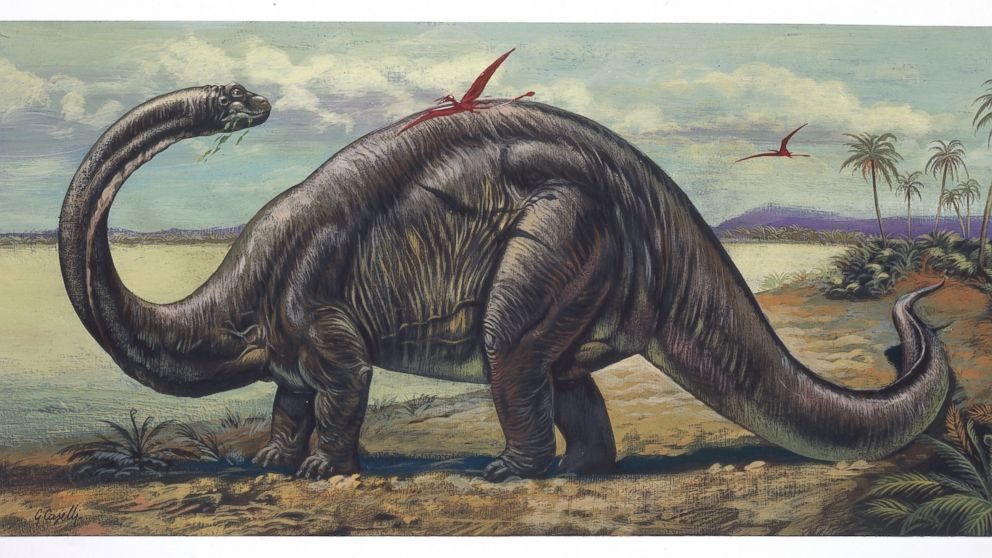Brontosaurus Finally Validated as a Distinct Dinosaur
The thunder lizard may be reinstated into the dino club.

— -- On the edge of the solar system, the dwarf planet Pluto, which knows what it feels like to be banished from an exclusive club, may be cheering for the brontosaurus.
While the long-necked dinosaur's name may be known by legions of fans and even made it on to a postage stamp in the 1980s, most paleontologists would be quick to correct people that the brontosaurus is not a dinosaur.
But the iconic dinosaur name may finally be reinstated more than a century after researchers found the long-necked brontosaurus and apatosaurus likely belonged to the same genus, according to an analysis published today in the journal PeerJ.
The apatosaurus name, which was published first, took precedence while the brontosaurus was cast aside. Both dinosaurs lived approximately 150 million years ago.
"Until very recently, the claim that Brontosaurus was the same as Apatosaurus was completely reasonable, based on the knowledge we had," Emanuel Tschopp, one of the researchers from the New University of Lisbon in Portugal, said in a statement.
Setting out to analyze the differences between the large grouping of diplodocid dinosaurs, which include the apatosaurus and other dinosaurs characterized by their long necks and plant-based diets, Tschopp and his team said they did not expect to resurrect the brontosaurus.
Using more recently discovered fossil evidence of similar dinosaurs, researchers found enough distinctions that place the brontosaurus in its own genus, according to the study, which looked at 49 fossils.
They found the apotosaurus had a bulkier neck, while the slightly more slender brontosaurus stood out for a longer bone found in its ankles.
"The differences we found between Brontosaurus and Apatosaurus were at least as numerous as the ones between other closely related genera, and much more than what you normally find between species," Roger Benson, a professor at the University of Oxford and co-author of the study, said in a statement.
The brontosaurus' modern day story began in the 1870s when rival paleontologists Edward Cope and Othniel Marsh raced to publish new dinosaurs names.
Marsh first discovered the apatosaurus and then two years later found another dinosaur fossil at the same location and named it the brontosaurus.
In 1903, it was ruled that the two skeletons bared too many similarities and were different species of the same genus, which was called the apatosaurus.
More than a century later, new discoveries have continued to prove the ever-changing nature of science proving that perhaps there is hope for Pluto after all.




